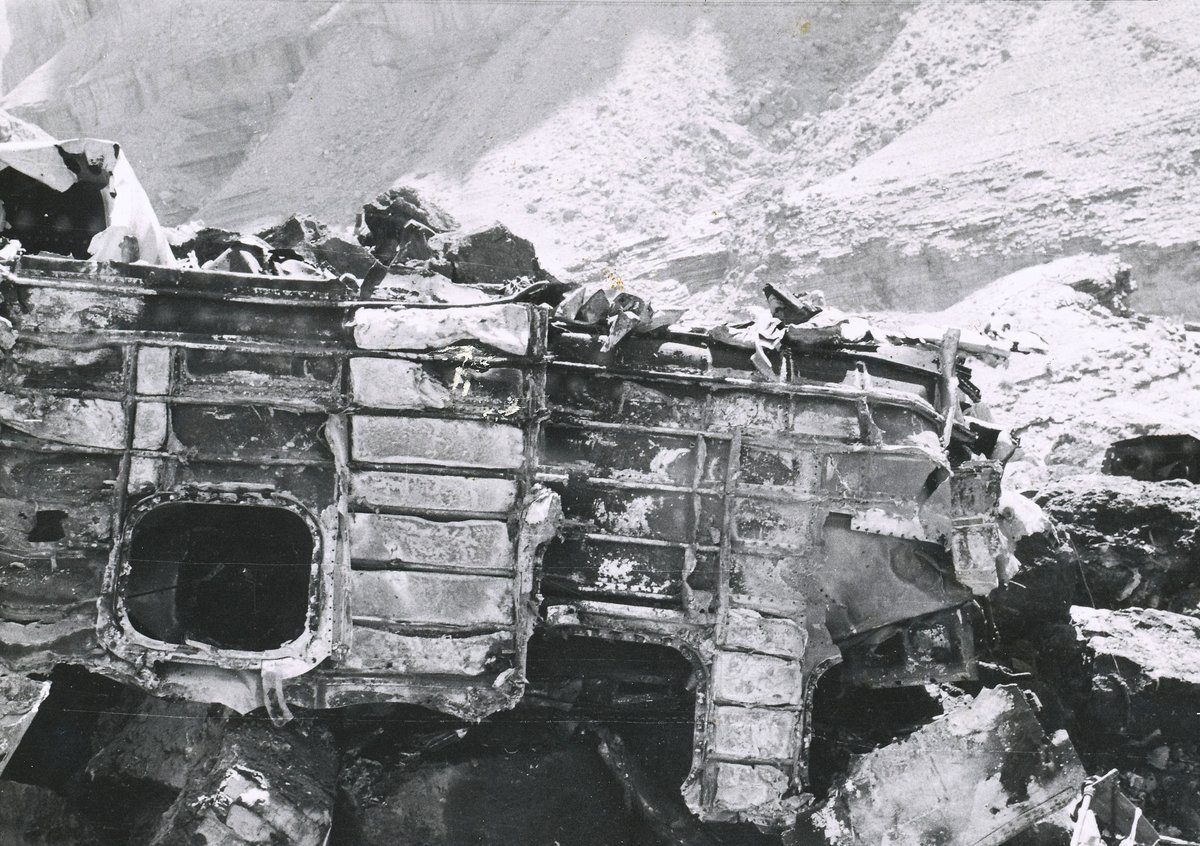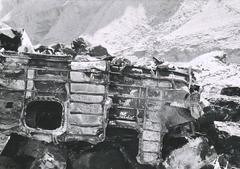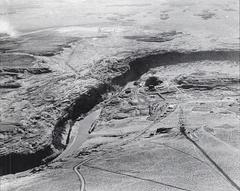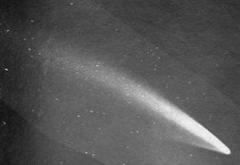
1956 Grand Canyon Mid Air Collision
1956 Grand Canyon Mid-Air Collision Site: Visiting Hours, Tickets, and Guide to Marble Canyon Historical Site
Date: 14/06/2025
Introduction
The Grand Canyon, a UNESCO World Heritage Site, is more than a geological marvel—it is also the backdrop of one of the most tragic events in American aviation history. On June 30, 1956, a mid-air collision between Trans World Airlines Flight 2 and United Airlines Flight 718 near Marble Canyon resulted in the loss of all 128 people on board. This accident not only led to major reforms in aviation safety—most notably the creation of the Federal Aviation Administration (FAA) in 1958—but also left an indelible mark on the cultural and spiritual landscape of the region (NPR).
This guide provides everything you need to know about visiting the memorials dedicated to the disaster, practical information about Grand Canyon National Park, insights into the event’s historical and cultural significance, and tips for an enriching and respectful visit.
Table of Contents
- The 1956 Collision: Historical Overview
- Memorials & Commemorations
- Visiting Hours, Tickets, and Access
- Cultural Significance & Indigenous Perspectives
- Impact on Aviation Safety
- Preservation, Accessibility, and Legal Restrictions
- Special Events & Photography Tips
- Paranormal Folklore
- Practical Visitor Information
- Frequently Asked Questions
- Useful Resources & Further Reading
- Summary & Final Tips
The 1956 Collision: Historical Overview
On June 30, 1956, TWA Flight 2 (Lockheed L-1049 Super Constellation) and United Airlines Flight 718 (Douglas DC-7) collided at 21,000 feet above the Grand Canyon’s Marble Canyon region. All 128 passengers and crew perished, making it the deadliest commercial airline disaster in the U.S. at the time. The tragedy exposed critical flaws in the nation’s air traffic control system and led directly to the formation of the FAA and the implementation of modern air traffic regulations and technology (Wikipedia; FAA).
Memorials & Commemorations
While the actual crash sites near Chuar and Temple Buttes are inaccessible, several memorials honor the victims and educate the public:
Desert View Point Memorial
Located at the South Rim’s Desert View Point, this official memorial features interpretive displays overlooking the general area of the collision. The viewpoint offers both historical context and views of the landscape connected to the tragedy (National Park Service; NPS Place).
Flagstaff Citizens Cemetery
A mass grave for 39 victims (including many unidentified) is located here, marked by a solemn memorial. This site is open to the public during daylight hours (VC Star).
Grand Canyon Pioneer Cemetery
Near Grand Canyon Village, this cemetery contains graves and a memorial for United Airlines victims. It is accessible year-round.
Visiting Hours, Tickets, and Access
- Park Hours: Grand Canyon National Park is open 24/7 year-round.
- Desert View Area: Facilities typically open from 8:00 a.m. to sunset (seasonal variations apply).
- Entrance Fees: $35 per vehicle for a 7-day pass (prices subject to change). Purchase tickets online or at park entrances (NPS Fees).
- Memorial Hours: Cemeteries are open during daylight hours.
- Accessibility: Desert View Point and the Watchtower are wheelchair accessible. Both cemeteries have nearby parking.
Travel Tip: Check the Grand Canyon National Park website for up-to-date information on hours, fees, and any seasonal changes.
Cultural Significance & Indigenous Perspectives
The Sacred Landscape
For Indigenous communities, particularly the Hopi, the Grand Canyon is a sacred place. Near the collision site lies a sipapu, a spiritual portal central to Hopi cosmology, believed to connect this world with the underworld. The area is approached with reverence and caution; disturbing it is thought to bring misfortune (Backpacker). The 1956 disaster not only caused a national tragedy but also disrupted a landscape held sacred for centuries.
Community Response
The collision’s aftermath affected local and Indigenous communities deeply, prompting respectful recovery efforts and ongoing memorialization.
Impact on Aviation Safety
The disaster directly led to the creation of the FAA and a comprehensive overhaul of air traffic control, including:
- Nationwide radar coverage
- Standardized procedures for controlled airspace
- Introduction of transponders and collision-avoidance systems
These reforms have made U.S. commercial aviation among the safest in the world (Simple Flying; NPR).
Preservation, Accessibility, and Legal Restrictions
Crash Site Access
The two main debris fields are located in rugged, remote areas near Chuar Butte and Temple Butte. Due to environmental sensitivity, safety concerns, and respect for the victims, public access is strictly prohibited and monitored by park officials (LA Times).
Viewing the Site
The general vicinity of the collision can be seen from the Desert View Overlook. Interpretive displays and a proposed landmark plaque provide educational context (VC Star).
River Expeditions
Some Colorado River rafting trips pass near Chuar Butte, offering distant views of the area. Guides often share the history of the collision, but landing or hiking to debris sites is forbidden (Western River Expeditions).
Special Events & Photography Tips
- Annual Memorial Ceremonies: Held at Desert View Point, often including wreath-laying and moments of silence.
- Photography: Sunrise and sunset offer the best lighting for dramatic canyon and memorial views.
Paranormal Folklore
The collision site and its surroundings are rich in paranormal accounts, intertwining history with legend:
- Apparitions: Rangers and visitors report seeing figures in 1950s attire near Crash Canyon (Backpacker).
- Eerie Lights: Nighttime sightings of orbs and lantern-like lights (Grand Canyon Helicopter Tour).
- Unusual Sensations: Feelings of dread, illness, or danger reported near the sipapu.
- Other Haunted Sites: The El Tovar Hotel and Hopi House are also steeped in supernatural tales.
These stories contribute to the Grand Canyon’s mystique, blending tragedy, spirituality, and folklore.
Practical Visitor Information
Directions
- Desert View Watchtower: 25 miles east of Grand Canyon Village via AZ-64.
- Grand Canyon Cemetery: Near Grand Canyon Village.
- Citizens Cemetery, Flagstaff: 1300 S. San Francisco Street, Flagstaff, AZ.
Accessibility
All key memorials are accessible by car. Desert View and the Watchtower are wheelchair-friendly. Shuttle buses run seasonally.
Guided Tours & Programs
While there are no tours to the actual crash sites, park rangers occasionally offer interpretive talks about the collision’s history. Check the park’s event calendar for updates.
Safety & Etiquette
- Stay on designated trails and obey all posted signs.
- Do not attempt to access restricted crash sites.
- Respect all memorials and cultural features.
- Prepare for limited cell service and variable weather.
- Bring water, sun protection, and suitable clothing.
Frequently Asked Questions
Q: Can I visit the actual 1956 crash site?
A: No. The crash sites are in remote, protected areas inaccessible to the public.
Q: What are the visiting hours for memorials?
A: Memorial cemeteries are open during daylight hours; the park itself is open 24/7.
Q: How do I get tickets for Grand Canyon National Park?
A: Tickets are available online or at park entrances. See the NPS website for the latest fees.
Q: Are there guided tours about the collision?
A: Ranger-led programs and some river or helicopter tours include historical context and stories about the disaster.
Q: Can I see the site from the river?
A: Yes, rafting trips on the Colorado River pass the general area but do not stop at debris sites.
Useful Resources & Further Reading
- NPR: Marking a 1956 Plane Collision Over the Grand Canyon That Changed Aviation Safety
- National Park Service: Grand Canyon National Park Official Website
- Backpacker: America’s Scariest Trails – Tragedy in the Grand Canyon
- Grand Canyon Helicopter Tour: Signs of Paranormal Activity
- FAA: Accident Lessons Learned
- Western River Expeditions: Chuar Butte
- VC Star: Remembering Victims of 1950s Grand Canyon Plane Crash
- Simple Flying: 1956 Grand Canyon Mid-Air Collision Story
- LA Times: Grand Canyon Crash Site as National Historic Landmark
Summary & Final Tips
The 1956 Grand Canyon mid-air collision is a defining moment in aviation history and a site of deep cultural resonance. While the crash sites remain inaccessible, memorials at Desert View Point, Flagstaff, and Grand Canyon Village offer places for reflection and remembrance. Visitors are encouraged to approach the area with cultural sensitivity, honoring both the lives lost and the spiritual significance of the landscape (National Park Service; Backpacker; NPR).
To make the most of your visit:
- Plan ahead and consult official sources for current hours, fees, and programs.
- Respect all memorials and sacred sites.
- Attend ranger-led talks or commemorative events for deeper understanding.
- Download the Audiala app for audio guides and real-time updates.
- Explore related articles for more on Grand Canyon history and aviation safety.
By blending remembrance with exploration, your visit can honor the past while appreciating the enduring beauty and significance of the Grand Canyon.



